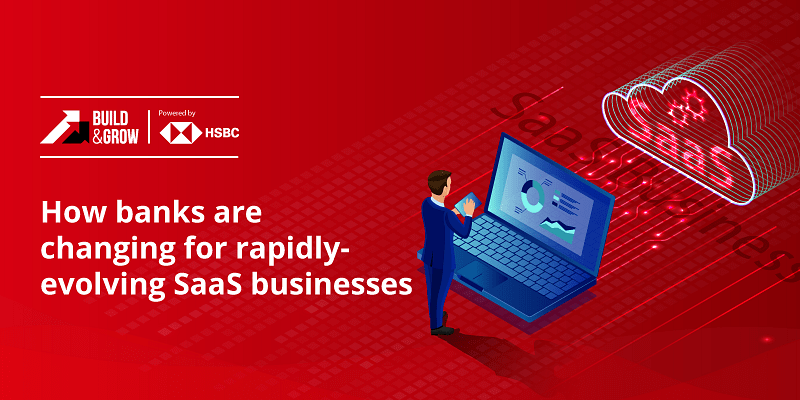Software-as-a-service (SaaS) has topped the list of disruptive internet-enabled innovations witnessed in the last decade and has outperformed the popular BPO/KPO industry through its unique business model as well as volumes. Nearly 8,000 SaaS startups were founded in the last decade that emphasised subscription-based services, offering immense value to individual consumers over the internet medium. Propelling its growth further has been the democratisation in technology, making it easier to set up a SaaS company and diversify into new areas of EdTech, PropTech, HealthTech — segments that were unheard of a few years ago.
The success of SaaS lies in its ever-changing and evolving nature, and supporting such businesses with financial services also requires a differentiated approach. Earlier, banks viewed SaaS firms like any general business, offering standard template products. However, banks such as HSBC sensed the need to address it with a different approach that will be done by recognising the real end-customers of its banking services. It shifted the boundary of an end-customer from a direct SaaS client firm to actual customers of SaaS offerings. This radical change in mindset helped banks like HSBC curate innovative services that benefit all stakeholders in the ecosystem.
How did HSBC deliver such services? It starts with designing products and services on the same principles adopted by SaaS companies.
- Convenience of multiple offerings with one product
End-customers expect subscribed services to start immediately after payment. But the challenge lies in multiple payment preferences offered by them — be it UPI, credit cards, debit cards, wallet, and internet banking, among others. Further, SaaS firms, especially in cases of EdTech companies, have international customers too and they require platforms that support international payments.
HSBC’s ‘omni-collect’ product sought to address all these challenges with a one-stop solution. The platform enables collections from all major domestic and international payment modes operating in the online and offline payments space. It integrates with multiple leading payment gateway aggregators, each bringing its own unique feature set. The benefit is dual — end-consumers can pay by any convenient option and SaaS companies need no time and effort in managing these multiple payment options.
Pune-based TailorSmart.in operates as an integrated agile platform, that brings the whole tailoring ecosystem to one place, from highly talented designers to tailors and other experts. Launched just four years ago, this startup is looking to grow its presence beyond just seven Indian cities and has been bringing the “Tailor at home”. TailorSmart has built its marketplace using traditional and convenient banking that helped them sustain, until the conversation with the HSBC team gave a new dimension on how to grow its operations with minimal cost and efforts, yet at the same time focus on customer delight by processing instant refunds to meet changing customer needs.
“Making UPI as a payment option is a step we’ve taken to build the required infrastructure to scale up by integrating with our existing receivables and reconciliation process, which can be a nightmare for many,” says Pritam Onsker, Founder, TailorSmart.in.
“If you are running a SaaS company, EdTech, HealthTech or even FashionTech venture, you should definitely explore UPI 2.0 – an auto-pay option for an instant, simple, cost-effective way to collect your recurring and/or subscription payments. The same holds true for TailorSmart.in who deals with over 70 percent of repeat buyers,” says Anuj Kanwar, Head Transaction Banking, Business Banking, HSBC India.
- Ease and transparency in transaction records
SaaS firms offer flexible subscription options to consumers and their users can be diverse, each opting for a different subscription plan and top-ups. This dynamic setup, coupled with expectations of multiple payment options, raises the pain-point of reconciliation that is needed between transactions recorded in CRM, sales channels and other internal applications, with the actual entries in the bank.
Banks like HSBC have taken great strides to help SaaS firms with its auto-recon module built into the omni-collect platform. A SaaS firm can have complete visibility of inward and outward payment transactions, reconciled with the actual credits and debits in the bank account. The platform also provides alerts on anomalies for the finance team to act upon.
SaaS’s key selling point is a simple user interface and journey that eliminates the need to have special technical skills to use SaaS products. Such firms expect a similar level of simplicity from their banking partners as well, and HSBC, with its commercial cards and one-stop internet banking portal, has met such expectations through multiple frontiers.
The bank’s commercial cards service offers multi-purpose cards coupled with an expense management module to manage all business transactions with ease. Meanwhile, its net banking portal helps customers view all accounts — domestic and international —in one place. It is also further enhancing capabilities to deliver seamless transaction experience across cross-border payments, trade finance operations and forex management.
Looking ahead
After a disruptive entrance into the startup ecosystem in the last decade, the next 10-year period will see internet-enabled services such as SaaS further cementing their business among internet-enabled services. And, with trade between countries no longer being restricted to physical goods, data exchange via such borderless services will gain traction and become more sophisticated. The SaaS ecosystem will rely immensely on its banking partners.
Banks such as HSBC are here to serve such growing sectors with their unique bouquet of services. “SaaS is one of the most exciting spaces. Banks such as HSBC would be able to scale up only if our SaaS customers and their customers scale up. These are exciting times, and we at HSBC are geared up to bring even more innovative offerings and platforms to facilitate this growth,” says Prakash Jaiswal, Head of SME and Startup Banking, HSBC India.
Going forward, the bank also expects four major challenges in driving the next set of growth for SaaS firms and financial institutions.
- How can the high number of low-value transactions help build a digital profile and facilitate credit decisioning?
- How can banks finance SaaS firms and their consumers better?
- How can banks offer the next level of beyond banking services dedicated to SaaS?
- How can SaaS companies, banks, end customers and technology players co-create innovative solutions, fit for the future?
The road ahead for the banking space as well as SaaS firms is full of growth opportunities. Entities in both the segments must double down on solutions and services to address key challenges that lie in their growth story.








